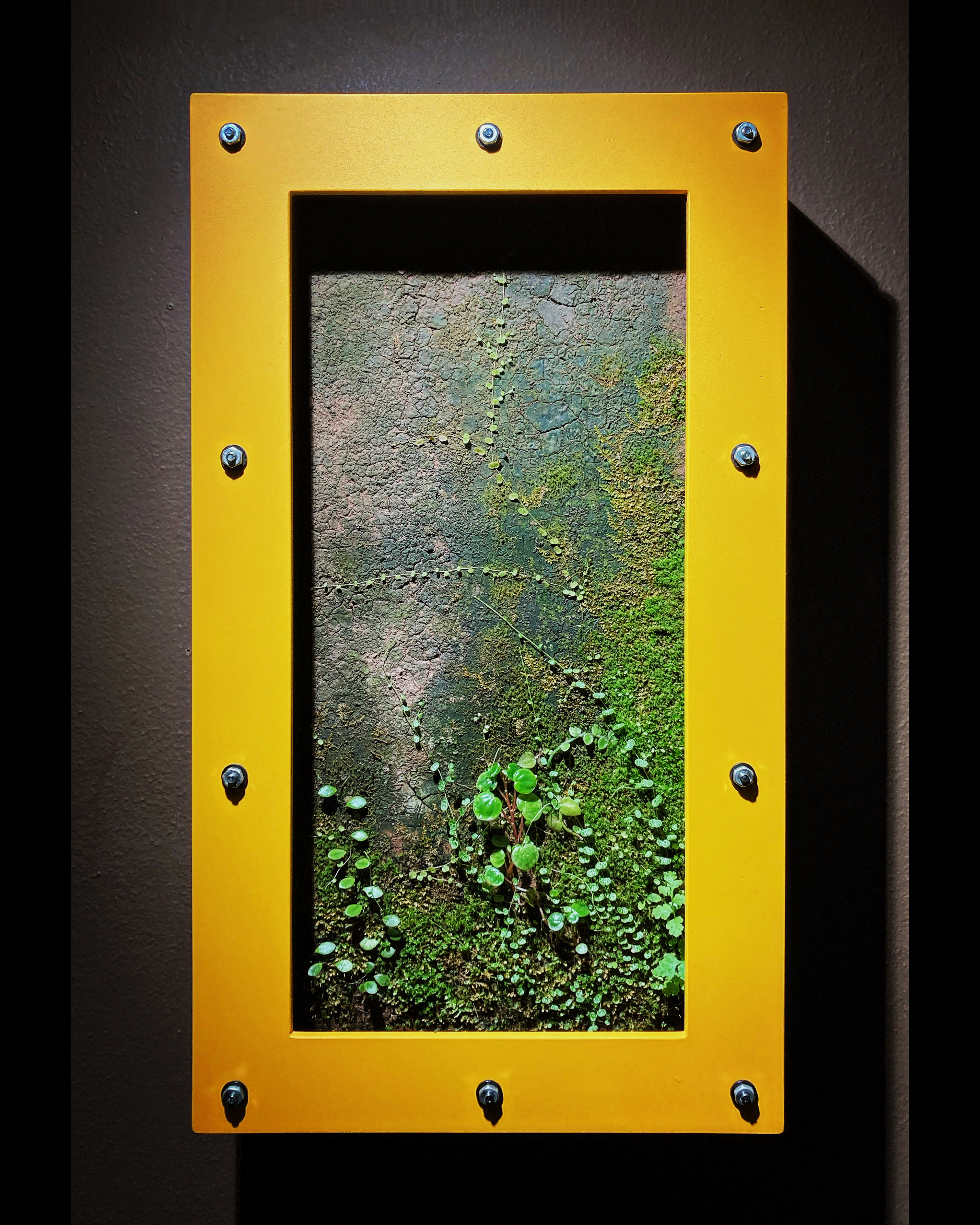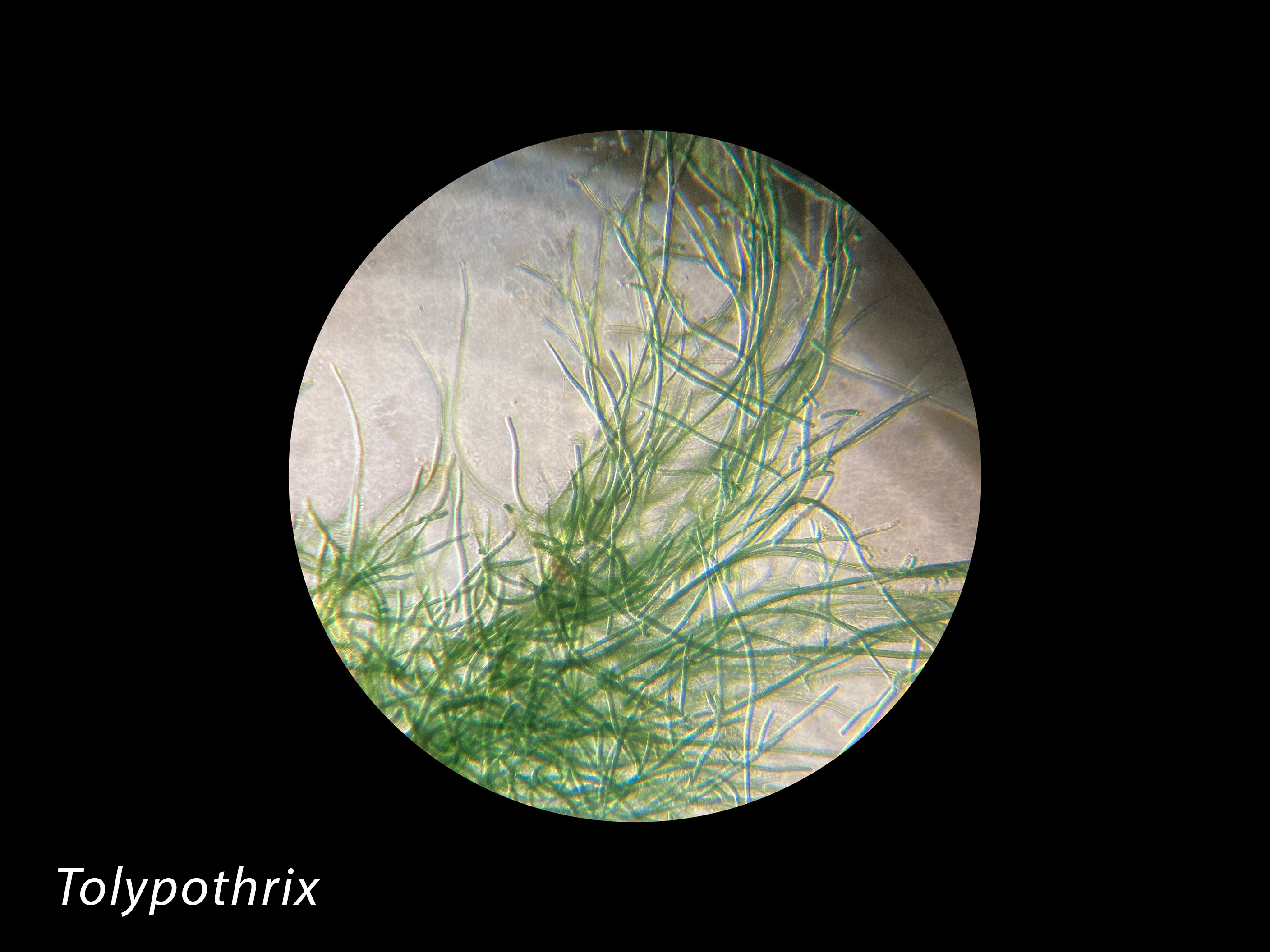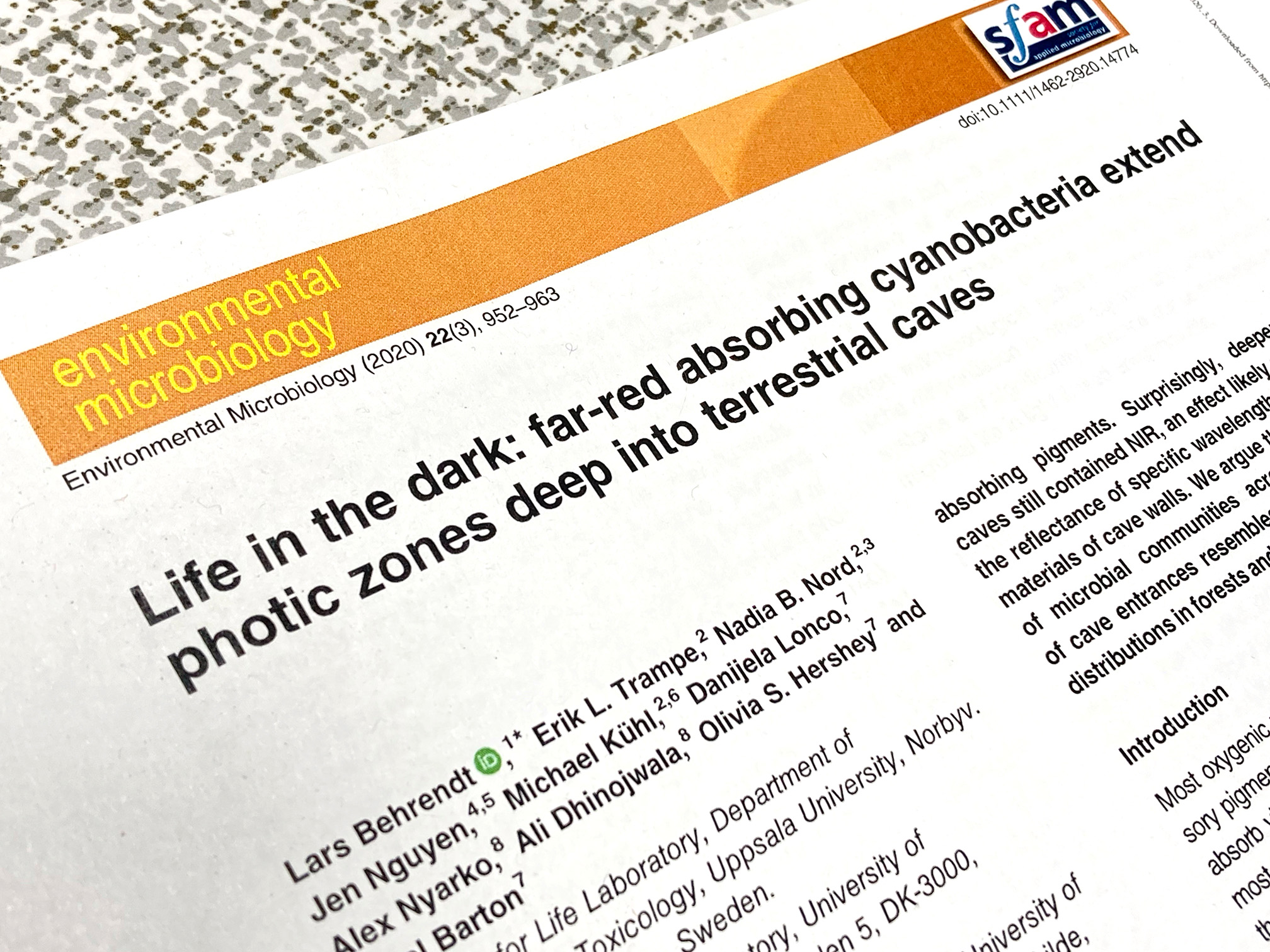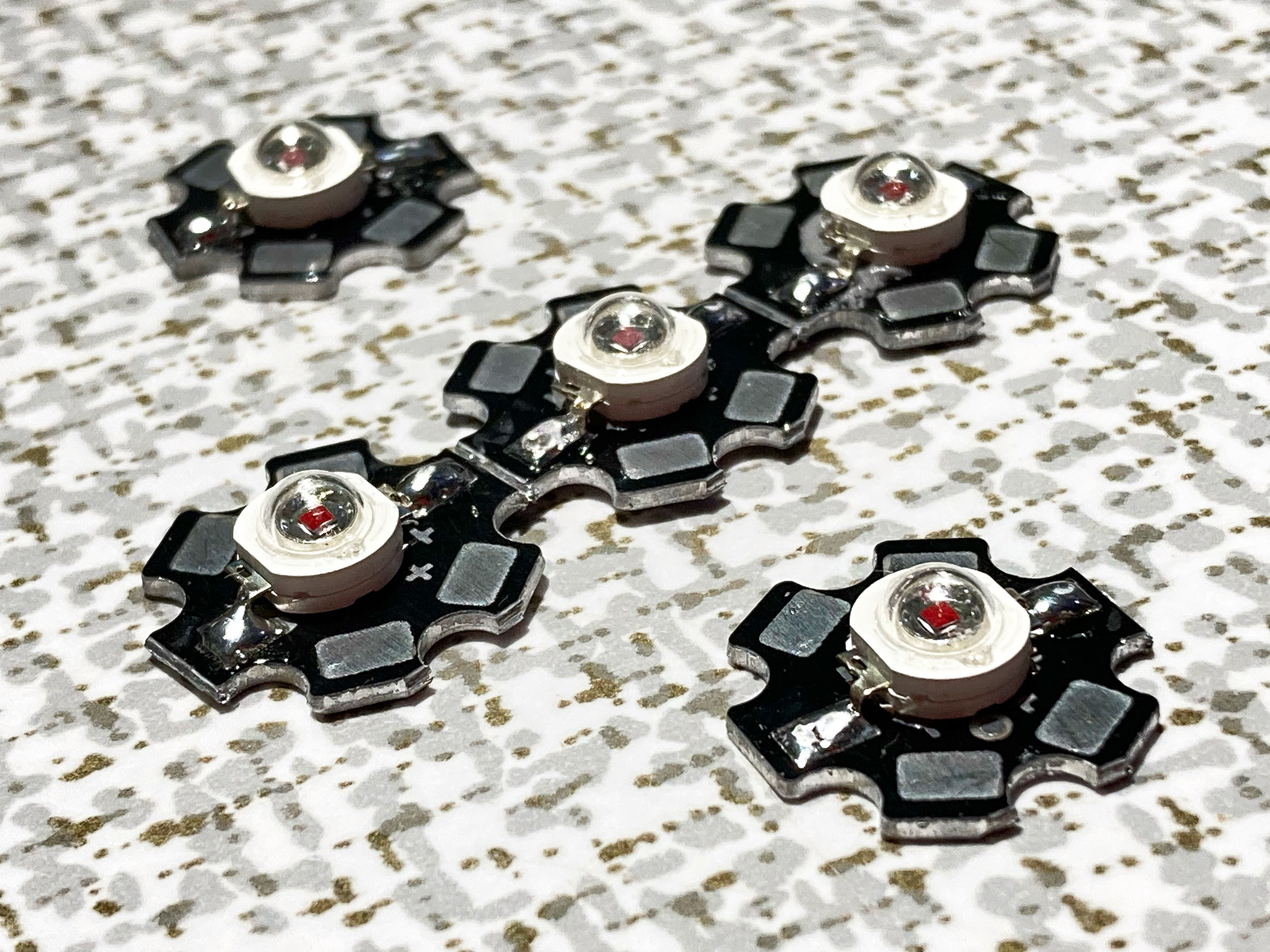Cave Environment - Infrared Photosynthesis - Bookshelf 6G
Note: this project is not going to be a marine tank, but the general concept, an aquarium covered to exclude light and create a very dark environment, might be of interest for reef aquarium ideas. So I post it here. Depending upon my final livestock choices, setup will be either brackish or freshwater.
I've been working on a few different projects testing out Cyanobacteria as display organisms. While Cyanobacteria are usually viewed as pests in aquariums, they have fascinating biology and ecology as well as compelling features for model ecosystem culture. Some Cyanobacteria have extreme desiccation tolerance and can spring back to action if watered after long periods of drying out. They also produce their own food with light energy and Cyanobacteria species have distinct colors, textures and morphologies. Cyanobacteria are keystone species in unique microbial ecosystems, such as stromatolites and desert biocrusts.
Here is a vertical garden piece I made along with a few others in a series. It grows the Cyanobacteria, Tolypolthrix and Anabaena on a clay panel along with mini Ferns, Peperomia, Mosses and a Liverwort...


Certain Cyanobacteria are especially interesting as extremophiles, organisms that live and grow at extreme temperatures, pH, salinity or other conditions that would kill most living things. I recently learned about a newly described extremophile ecosystem supported by Cyanobacteria photosynthesizing with the very small amounts of natural light that penetrate deep within caves. These conditions are not only dimly lit, but due to the differential absorption and reflection of light wavelengths from limestone surfaces, they have light mainly in the far-red and near-infrared spectrums (700nm-800nm). The upper end of this range is invisible to human eyes and has hundreds of times less energy than light in the visible spectrum, but the cave Cyanobacteria are nevertheless able to use it as an energy source for photosynthesis and very slow growth. This is amazing!
Among other adaptations, these Cyanobacteria make use of chlorophyll f and chlorophyll d, photosynthetic pigments able to absorb this long-wavelength light. Plants do not have these forms of chlorophyll. Chlorphyll f was discovered recently, in 2010, in another special microbial habitat, the stromatolites of Shark Bay, Australia...
https://www.science.org/doi/10.1126/science.1191127
There are just a few articles published to date on the cave Cyanobacteria, but here's the one I downloaded and read to learn more about the topic...
https://ami-journals.onlinelibrary.wiley.com/doi/10.1111/1462-2920.14774

The common Cyanobacteria that you can purchase as live cultures or find growing wild are less likely to produce chlorophyll f and chlorophyll d and grow in cave conditions. My plan is to build this terrarium/paludarium setup as a representation of the environment to stand on its own, then add cave Cyanobacteria if I am able to lawfully and ethically source them from somewhere. Maybe I can write some emails and find a cave biology researcher who will take interest if I explain the project. If I do manage to find any kind of promising Cyanobacteria it will be a real challenge to get them to grow at all. But again, I am as interested in just creating the environment and working through some of the visual scaping and layout ideas for this different kind of setup. I also have a couple of cave livestock ideas—more on these later—among animals available in the trade.
I got the project enclosure, a Lifegard Aquatics 6-gallon tank, and set it up on this shelf...

I really like bookshelf aquariums. You can make something rather expansive, but with a relatively compact, lightweight and affordable format. That 36" light is not for the setup; I just put it there for a view of the aquarium. For the project I am going to build a strip with a driver, heat sink and these 1-watt, 740nm star LEDs...

I haven't wired them up and turned them on yet, but these LEDs do not shine with a strictly 740nm light. They instead produce a range of far-red (including some deep-red visible light) and infrared light with 740nm as the spectrum peak wavelength.
I have some more electronics and other components to add and I'll explain those as I get them organized. My layout concept is to just use a sand bed covered with about 1" of water and with an arrangement of partially submerged limestone aquascaping rocks . I will not attempt to build rock features like the characteristic forms that develop in caves, but just assemble the stones and sand in a pleasing scape for the bookshelf tank format and with varied, moist rock surfaces for potential Cyanobacteria and livestock inhabitants. I think Seiryu stone will look really nice like this...
Seiryu Stone
Thanks for reading! Updates on the way pretty soon.
Note: this project is not going to be a marine tank, but the general concept, an aquarium covered to exclude light and create a very dark environment, might be of interest for reef aquarium ideas. So I post it here. Depending upon my final livestock choices, setup will be either brackish or freshwater.
I've been working on a few different projects testing out Cyanobacteria as display organisms. While Cyanobacteria are usually viewed as pests in aquariums, they have fascinating biology and ecology as well as compelling features for model ecosystem culture. Some Cyanobacteria have extreme desiccation tolerance and can spring back to action if watered after long periods of drying out. They also produce their own food with light energy and Cyanobacteria species have distinct colors, textures and morphologies. Cyanobacteria are keystone species in unique microbial ecosystems, such as stromatolites and desert biocrusts.
Here is a vertical garden piece I made along with a few others in a series. It grows the Cyanobacteria, Tolypolthrix and Anabaena on a clay panel along with mini Ferns, Peperomia, Mosses and a Liverwort...
Certain Cyanobacteria are especially interesting as extremophiles, organisms that live and grow at extreme temperatures, pH, salinity or other conditions that would kill most living things. I recently learned about a newly described extremophile ecosystem supported by Cyanobacteria photosynthesizing with the very small amounts of natural light that penetrate deep within caves. These conditions are not only dimly lit, but due to the differential absorption and reflection of light wavelengths from limestone surfaces, they have light mainly in the far-red and near-infrared spectrums (700nm-800nm). The upper end of this range is invisible to human eyes and has hundreds of times less energy than light in the visible spectrum, but the cave Cyanobacteria are nevertheless able to use it as an energy source for photosynthesis and very slow growth. This is amazing!
Among other adaptations, these Cyanobacteria make use of chlorophyll f and chlorophyll d, photosynthetic pigments able to absorb this long-wavelength light. Plants do not have these forms of chlorophyll. Chlorphyll f was discovered recently, in 2010, in another special microbial habitat, the stromatolites of Shark Bay, Australia...
https://www.science.org/doi/10.1126/science.1191127
There are just a few articles published to date on the cave Cyanobacteria, but here's the one I downloaded and read to learn more about the topic...
https://ami-journals.onlinelibrary.wiley.com/doi/10.1111/1462-2920.14774
The common Cyanobacteria that you can purchase as live cultures or find growing wild are less likely to produce chlorophyll f and chlorophyll d and grow in cave conditions. My plan is to build this terrarium/paludarium setup as a representation of the environment to stand on its own, then add cave Cyanobacteria if I am able to lawfully and ethically source them from somewhere. Maybe I can write some emails and find a cave biology researcher who will take interest if I explain the project. If I do manage to find any kind of promising Cyanobacteria it will be a real challenge to get them to grow at all. But again, I am as interested in just creating the environment and working through some of the visual scaping and layout ideas for this different kind of setup. I also have a couple of cave livestock ideas—more on these later—among animals available in the trade.
I got the project enclosure, a Lifegard Aquatics 6-gallon tank, and set it up on this shelf...
I really like bookshelf aquariums. You can make something rather expansive, but with a relatively compact, lightweight and affordable format. That 36" light is not for the setup; I just put it there for a view of the aquarium. For the project I am going to build a strip with a driver, heat sink and these 1-watt, 740nm star LEDs...
I haven't wired them up and turned them on yet, but these LEDs do not shine with a strictly 740nm light. They instead produce a range of far-red (including some deep-red visible light) and infrared light with 740nm as the spectrum peak wavelength.
I have some more electronics and other components to add and I'll explain those as I get them organized. My layout concept is to just use a sand bed covered with about 1" of water and with an arrangement of partially submerged limestone aquascaping rocks . I will not attempt to build rock features like the characteristic forms that develop in caves, but just assemble the stones and sand in a pleasing scape for the bookshelf tank format and with varied, moist rock surfaces for potential Cyanobacteria and livestock inhabitants. I think Seiryu stone will look really nice like this...
Seiryu Stone
Thanks for reading! Updates on the way pretty soon.
















